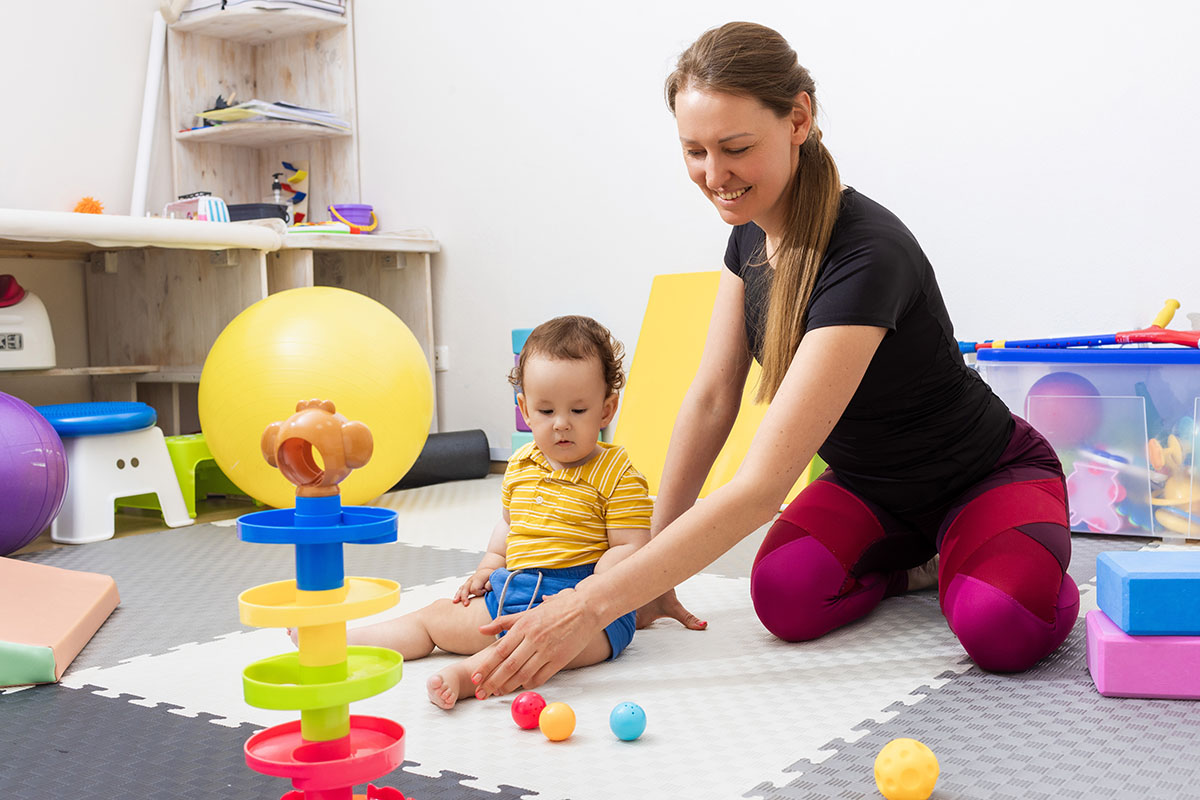Erb’s Palsy Causes and Symptoms

Definition and Overview
Erb’s Palsy is a condition that affects the nerves in a baby’s upper arm. It usually happens during birth when the baby’s neck is stretched to one side. This can cause weakness or even paralysis in the arm. The condition is named after Dr. Wilhelm Erb, who first described it in the late 1800s.
Historical Context
The history of Erb’s Palsy dates back to the 19th century. Dr. Wilhelm Erb, a German neurologist, was the first to identify and describe the condition. Since then, medical understanding and treatments have improved, but the condition still affects many newborns each year.
Prevalence and Demographics
Erb’s Palsy is not very common, but it does happen. It affects about 1 to 2 babies out of every 1,000 births. The condition can occur in any newborn, but certain factors like a difficult delivery or a larger baby can increase the risk. Both boys and girls can be affected equally.
Causes of Erb’s Palsy
Birth Trauma
One of the main causes of Erb’s Palsy is birth trauma. This can happen when a baby’s neck is stretched to one side during a difficult delivery. For example, if the baby’s shoulders get stuck in the birth canal, doctors might need to use extra force to help the baby out. This extra force can sometimes injure the nerves in the baby’s neck, leading to Erb’s Palsy.
Genetic Factors
While less common, genetic factors can also play a role in Erb’s Palsy. Some babies might be born with weaker or more fragile nerves, making them more likely to get injured during birth. However, this is not the main cause and happens in only a small number of cases.
Other Risk Factors
There are several other risk factors that can increase the chances of a baby developing Erb’s Palsy:
- Large Baby Size: Babies who are larger than average are more likely to get stuck during delivery, which can lead to nerve injuries.
- Breech Birth: When a baby is born feet-first, it can be harder for doctors to deliver the baby safely, increasing the risk of nerve damage.
- Prolonged Labor: Long and difficult labors can put extra stress on both the mother and baby, raising the chances of birth injuries.
- Use of Delivery Tools: Sometimes, doctors need to use tools like forceps or vacuum extractors to help deliver the baby. These tools can sometimes cause nerve injuries if not used carefully.
Understanding these causes can help in taking steps to prevent Erb’s Palsy and ensure a safer delivery for both mother and baby.
Recognizing Symptoms of Erb’s Palsy
Physical Symptoms
Erb’s Palsy often shows up as weakness or a lack of movement in a baby’s arm. The arm might hang limp or be bent at the elbow. Sometimes, the baby can’t grip things with their hand on the affected side. These signs can be seen right after birth.
Developmental Delays
Children with Erb’s Palsy might take longer to reach milestones like crawling, walking, or using their hands. They may also have trouble with tasks that need fine motor skills, like picking up small objects or drawing.
Associated Conditions
Erb’s Palsy can sometimes come with other issues. These might include problems with the shoulder or collarbone, or even nerve damage in other parts of the body. It’s important to watch for these additional conditions to provide the best care.
Diagnosis and Medical Evaluation
Initial Assessment
When a baby shows signs of Erb’s Palsy, doctors start with a thorough initial assessment. This includes a physical exam to check for weakness or lack of movement in the arm. The doctor will also ask about the birth process and any complications that might have occurred.
Diagnostic Tests
To confirm the diagnosis, doctors may use several tests:
- X-rays: To look for any broken bones or joint issues.
- MRI: To get detailed images of the nerves and muscles in the shoulder and arm.
- EMG (Electromyography): To measure the electrical activity of the muscles and see how well the nerves are working.
Differential Diagnosis
It’s important to rule out other conditions that might cause similar symptoms especially if you’re considering taking legal action. Doctors will consider other nerve injuries, muscle disorders, or bone problems. This helps ensure the right treatment plan is made for the baby.
Treatment Options for Erb’s Palsy
Physical Therapy
Physical therapy is often the first step in treating Erb’s Palsy. It involves exercises to improve strength and flexibility in the affected arm. Therapists may use gentle stretching and movement exercises to help the child regain function. Regular sessions can make a big difference in recovery.
Surgical Interventions
In some cases, surgery might be needed to repair damaged nerves. Surgeons can perform procedures to reconnect nerves or transfer tendons. These surgeries are usually considered when physical therapy alone isn’t enough. The goal is to improve the arm’s movement and strength.
Alternative Therapies
Some families explore alternative therapies like acupuncture or massage. While these methods are not always backed by scientific evidence, they can provide additional support. It’s important to discuss any alternative treatments with a healthcare provider to ensure they are safe and appropriate for the child.
Recovery and Long-term Outlook
Prognosis
The outlook for children with Erb’s Palsy can vary. Some kids recover fully, while others might have lasting issues. Early treatment often leads to better results. The severity of the injury and how quickly treatment starts are key factors in recovery.
Rehabilitation Strategies
Rehabilitation is crucial for improving movement and strength. Common strategies include:
- Physical Therapy: Regular exercises to help regain muscle function.
- Occupational Therapy: Activities to improve daily living skills.
- Home Exercises: Parents can help with exercises at home to support therapy.
Support Systems
Having a strong support system is important. Families can find help through:
- Support Groups: Connecting with other families facing similar challenges.
- Medical Professionals: Regular check-ups with doctors and therapists.
- Educational Resources: Learning more about Erb’s Palsy and how to manage it.
- Legal Services – Hiring an Erb’s Palsy attorney to help with your case.
Preventive Measures and Awareness
Prenatal Care
Prenatal care is crucial for reducing the risk of Erb’s Palsy. Regular check-ups with a healthcare provider can help monitor the baby’s development and identify any potential issues early on. Expectant mothers should follow a balanced diet, avoid harmful substances, and manage chronic conditions like diabetes or high blood pressure.
Safe Delivery Practices
Safe delivery practices are essential to prevent birth trauma, a leading cause of Erb’s Palsy. Healthcare providers should be trained in techniques to handle difficult deliveries, such as shoulder dystocia. Using appropriate tools and methods during delivery can significantly reduce the risk of injury to the baby.
Educational Campaigns
Raising awareness about Erb’s Palsy through educational campaigns can help expectant parents and healthcare providers understand the importance of preventive measures. These campaigns can include informational brochures, community workshops, and online resources. By spreading knowledge, we can work towards reducing the incidence of this condition.







